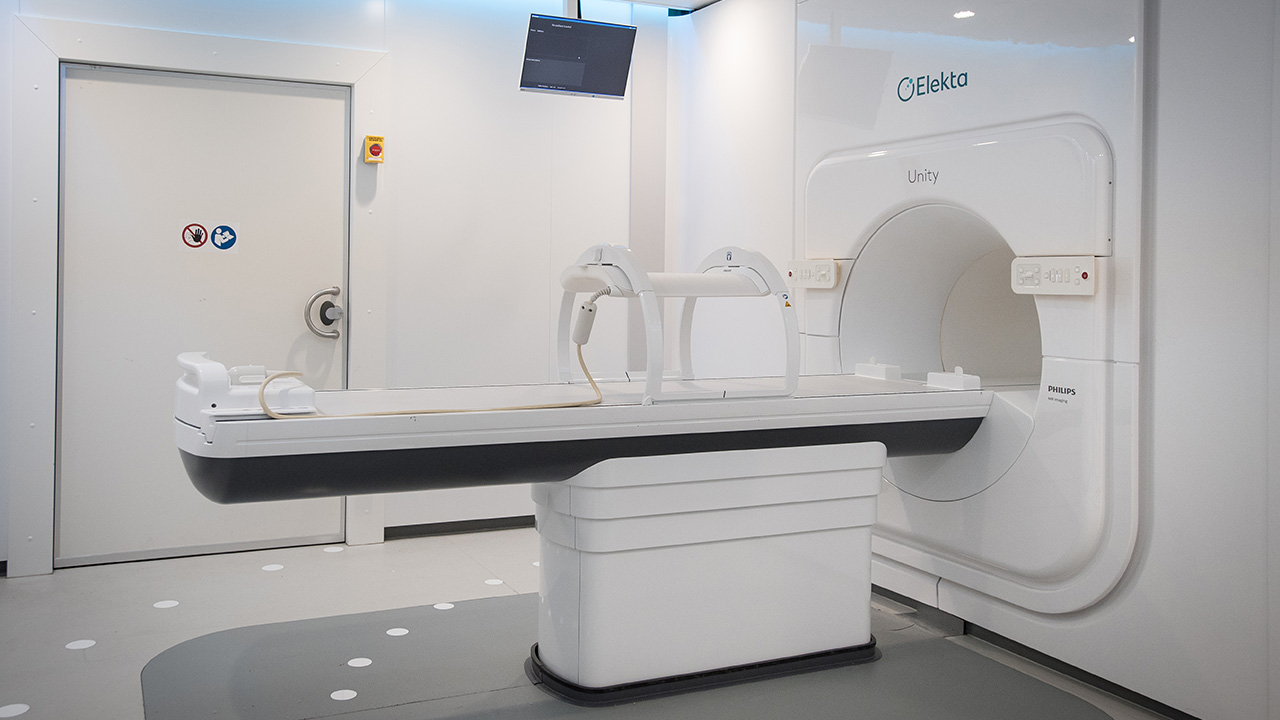Upper abdominal patient receives first treatment on MR-Linac – Elekta Unity
Members of Sunnybrook Health Sciences Centre’s radiation team recently completed the first-in-Sunnybrook treatment of upper abdominal cancer on the MR-Linac — the Elekta Unity. Upper abdominal cancers include cancers with the poorest prognosis, particularly pancreatic and liver cancers.
This technology is the first machine in the world to combine radiation and high-resolution magnetic resonance imaging (MRI), and lets doctors at the Odette Cancer Centre target tumours and monitor their response to radiation with unprecedented precision, thanks to the machine's real-time MRI guidance.
Now, for eligible patients with pancreatic cancer or select upper abdominal cancers, stereotactic ablative radiotherapy (SABR) will take place on the MR-Linac, with daily real time imaging using motion-reduced imaging sequences recently approved by Health Canada and adaptive radiation planning.
SABR involves a high dose of radiation per treatment over 5 or less treatments, delivered with pinpoint precision to target tumours. Typically, this radiation treatment is pre-planned based on CT images and performed based on that plan for the course of treatment.
In this latest treatment protocol, MRI guides the care team to tailor the radiation plan based on the size and position of the tumour, and any changes in the shape and location of the nearby normal organs like the bowels during each treatment session.
“The stomach, small bowel, and large bowel in the upper abdomen can distend and collapse, by filling with gas, food, or stool for example, making them change in size and position from time to time,” says Dr. Sylvia Ng, radiation oncologist and clinician scientist leading the treatment of pancreatic and liver cancers on the MR-Linac. “Pancreatic cancer is challenging to treat because it is located very close to these deformable normal upper abdominal organs, which are also very sensitive to radiation so we are limited in the dose we can give to the pancreatic tumour. To add to the challenge, the pancreatic tumour as well as the normal upper abdominal organs are subject to motion as we breathe. It is like trying to hit a moving target when the surrounding things you do not want to hit move in and out of the target zone in different ways each day.”
With treatment on the MR-Linac, the team will have a better view of the pancreatic cancer and surrounding radiosensitive normal organs, and will be able to adapt the radiation plan in real time on the day of treatment to ensure it is as precise as possible.
“With MRI-guided SABR and adaptive radiation planning that customizes to the patient’s anatomy on each day of treatment, we will be able to safely increase the radiation dose, with the intent to provide better and more durable tumour control, and improve the quality of life of patients with pancreatic cancer,” Dr. Ng added.
Dr. Ng says the team is currently working toward a similar approach to other upper abdominal cancers, such as liver cancer.
Thank you to Sunnybrook’s donor community, whose support has been crucial to the progress of Sunnybrook’s Cancer Ablation Therapy program and a catalyst for advancing this treatment.



